目次
ディケンズの集大成!晩年の傑作『大いなる遺産』のあらすじと解説
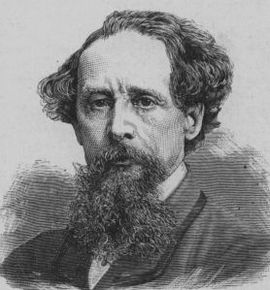 チャールズ・ディケンズ(1812-1870)Wikipediaより
チャールズ・ディケンズ(1812-1870)Wikipediaより
今回ご紹介するのは1860年から61年にかけてディケンズによって発表された『大いなる遺産』です。私が読んだのは新潮文庫の加賀山卓郎訳の『大いなる遺産』です。
では早速裏表紙のあらすじを見ていきましょう。
優しい鍛冶屋の義兄ジョーに育てられている少年ピップは、あるクリスマス・イヴの晩、脱獄囚の男と出会う。脅されて足枷を切るヤスリを家から盗んで与えた記憶は彼の脳裏に強く残った―。長じたある日、ロンドンからやってきた弁護士から、さる人物の莫大な遺産を相続することを示唆されると、貧しいながらも人間味ある生活を捨て去り、ピップは大都市ロンドンへと旅立つのだった……。(上巻)
ロンドンへ到着し、遺産に相応しい紳士となるべく、贅沢な生活を送るピップ。花嫁衣裳を着て隠遁生活を送る老婦人ハヴィシャム、その養女でピップを魅了するエステラ、再び姿を現した元脱獄囚マグウィッチなど、ピップは周囲の人々の思惑に翻弄される。その危うい運命はどこへ通じているのか。痛烈なユーモアと深い情感で、人問世界の悲喜交々を描いた、イギリス最大の文豪の代表的傑作長編。(下巻)
Amazon商品紹介ページより
この物語は少年ピップの成長物語です。貧しいながらも人間味ある生活をしていたピップはふとしたことからお金持ちの令嬢エステラに恋をします。
エステラへの恋は贅沢な暮らしへの憧れへとつながり、やがてピップに貧しい生活を捨てさせることになります。
しかし謎の遺産を相続することになりお金持ちになったピップは次々と謎の出来事に巻き込まれ、彼の「大いなる遺産」はますます謎めいたものとなっていきます。
「大いなる遺産」とは一体何なのか。誰からの遺産なのか。そしてピップはどうなってしまうのか。最後の最後まで息をつかせぬストーリ―で私たちを楽しませてくれます。
訳者の加賀山氏によれば、
『大いなる遺産』はディケンズの作風や技巧のいわば集大成であり、しかも物語として抜群におもしろいから、翻案も含めて、くり返し映画やドラマや舞台の原作に使われているのもうなずける。
新潮文庫 加賀山卓郎訳『大いなる遺産』P420
とのことで、この作品は数あるディケンズ作品の中でも特に人気のある作品のようです。さらに、
『大いなる遺産』は、ピップの成長を描いた教養小説であり、恋愛小説、ミステリー小説、犯罪小説、そして冒険小説でもある。今回訳してとくに感じたのは、テムズの川下りの場面が思いがけず長く丹念に描かれていることだった。冒険小説の人気の舞台のひとつは海洋だが、川でもこれだけ読者をワクワクさせることができるのだ。
新潮文庫 加賀山卓郎訳『大いなる遺産』P420
と述べています。
たしかに物語後半の川下りのシーンはものすごい緊張感があり、ページをめくる手が止まりませんでした。
感想~ドストエフスキー的見地から
『大いなる遺産』も『二都物語』と同じく、ドストエフスキーによる直接の言及はありません。
ですが、これは私の個人的な感想なのですが少しドストエフスキーの『未成年』に通ずるものがあるのではないかと感じました。
あわせて読みたい
ドストエフスキー『未成年』あらすじと感想~晩年の隠れた名作!「私はロスチャイルドになりたいのだ」
ドストエフスキーが描くロシアの混沌は、まだまだ未熟な「未成年」アルカージイを木っ端微塵に打ち砕くほど複雑怪奇なものでした。
ドストエフスキーのかつての理想郷「ヨーロッパ」の没落と、ロシアの混沌。
そんな八方ふさがりの悲惨な状況の中で何が人々を救いうるのか。それをドストエフスキーはこの作品で読者に問いかけます。
そしてこの作品で提出された問題はその後ますます熟成し最後の大作『カラマーゾフの兄弟』へと組み込まれていきます。
『未成年』は他の作品と比べると影が薄い作品となってしまっていますが、思想的な意味では非常に重要なものを含んだ作品です。
加賀山氏もあとがきで次のように述べています。
『大いなる遺産』に小説としての深みがあるもうひとつの理由は、〝語り〟である。主人公の一人称という叙述法は、自伝的要素の強い『デイヴィッド・コパフィールド』でも採用されたが、『大いなる遺産』では、大人になったピップの視点からたびたび昔の出来事を振り返り、若い自分の行動に対する感想を挿入している。それが大きな効果を発揮するのは、財産を得たあとにつれなく接してしまったジョーとビディに対する悔悟で(27章、57章など)、語りに内省的、多層的な味わいがある。ジョーやビディとたんに仲がいいだけでなく、諍いも不和も織り交ぜながら離別と再会を描いているところに、お伽噺ではない小説としての奥深い魅力が生まれている。
新潮文庫 加賀山卓郎訳『大いなる遺産』P424
ドストエフスキーの『未成年』も主人公の青年が自らの少年時代から過去を振り返る形での一人称小説です。
そして自らの境遇の謎を周囲の奇妙な人間関係や出来事から解き明かしていくというスタイルになっています。
『大いなる遺産』でもそうですが、このような小説スタイルは主人公の悩みや葛藤、心の揺れ動きがありありと見てとれます。
そのため読んでいる私たちはより主人公に感情移入しやすい状態になっていきます。
この小説はそんな主人公が様々な奇妙な出来事を経験しながら成長し、自らの謎、この小説では「大いなる遺産」の全貌を解き明かそうと奮闘する姿が描かれていきます。
ディケンズ晩年の円熟した技量が光る作品です。
ネタバレになるのでここには書きませんでしたが「大いなる遺産」の正体はかなり意外なもので、ディケンズにしてやられたな感が満載でした。
これまでのディケンズとは一味違ったひねりを加えてきます。
上下2巻構成で、手に取った時はちょっと長いかなと思ったりしましたが読み始めてしまえばあっという間でした。さすがディケンズです。
晩年の傑作『大いなる遺産』、こちらもとてもおすすめです。
以上、「ディケンズ晩年の傑作『大いなる遺産』あらすじと感想~巨万の富が少年の人生を狂わせる!?」でした。
Amazon商品ページはこちら↓
大いなる遺産(上)(新潮文庫)
次の記事はこちら
あわせて読みたい
シラー『群盗』あらすじと感想~『カラマーゾフの兄弟』に強烈な影響を与えたシラーの代表作!
この作品はなんと、シラーが22歳の年に書かれた作品で、一躍文壇の寵児に躍り出た出世作になります。
そしてこの作品はドストエフスキーが10歳の時、演劇でこの『群盗』を観て生涯忘れえぬ衝撃を受けたとされている作品です。
これは名作です。『カラマーゾフの兄弟』に関心のある人はもちろんですが、そうではない人もシラーのこの作品を読む価値は間違いなくあります。面白い作品です。おすすめです。
前の記事はこちら
あわせて読みたい
ディケンズ屈指の人気作『二都物語』あらすじと感想~フランス革命期のロンドンとパリを描く!
この作品は展開が早く、またそれぞれの登場人物もキャラが際立っていて読みやすいです。
解説でも、
「『二都物語』は、そうした〝ダーク〟ディケンズ全開の一篇で、二十を超える作品のなかでも傑出したエンターテインメントだ。二作しかない歴史物のひとつだが、『クリスマス・キャロル』とともにもっともよく知られ、小説として世界歴代トップクラスのべストセラーでもある。」と紹介されている名作です
ディケンズのおすすめ作品一覧はこちら
あわせて読みたい
ディケンズおすすめ作品7選~代表作『クリスマス・キャロル』など心温まる作品で有名な文豪をご紹介
19世紀のイギリスといえば、産業革命も進み、イギリスの国力は世界を席巻するものでした。ですがその反面労働環境は悲惨を極め、経済格差は広がり、環境公害も起こっていました。
そんな社会の闇をディケンズは冷静な目で描きます。ですがそんな闇を描きつつも彼は持ち前のユーモアや善良なる救い手の力によって物語に光を差し込ませます。
この絶妙なバランス感こそディケンズ小説の面白さの秘訣なのではないかと思います。
関連記事
あわせて読みたい
イギリスの文豪ディケンズとは~ディケンズなくしてドストエフスキーなし!
ディケンズはキリスト教作家としても尊敬されていました。ドストエフスキーが彼のことを非常に大切にしていたのもここに根があります。
ドストエフスキーは彼をキリスト教作家として尊敬していました。
そしてディケンズの愛に満ちた作品を愛し、その優しい世界観を感じていたのかもしれません。
悪のはびこる世界でも、優しい愛ある人間性を感じることができるのがディケンズの作品です。
だからこそドストエフスキーは子どもたちへの教育や、妻アンナ夫人にディケンズを勧めていたのかもしれません。
あわせて読みたい
松村昌家『水晶宮物語 ロンドン万国博覧会1851』あらすじと感想~世界初の万国博覧会とドストエフスキ...
ロンドン万博は世界で初めて開かれた万国博覧会で、1851年にその歴史は始まりました。
その頃ドストエフスキーはというと、シベリアのオムスク監獄で流刑生活を送っていました。
ドストエフスキーは1862年に初のヨーロッパ旅行に出かけています。そしてその時にロンドンを訪れており、第一回ロンドン万博後も残されていたこの水晶宮も見たと言われています。
あわせて読みたい
島田桂子『ディケンズ文学の闇と光』あらすじと感想~ディケンズとドストエフスキー・キリスト教を知る...
この本は名著中の名著です。本当に素晴らしいです。
読んでいて驚いてしまいました。
ディケンズといえばイギリスの文豪。ロシアで言うならドストエフスキーやトルストイのような存在です。
そのような作家の解説書となると読みにくかったり難しくなってしまいがちですが、この本は一味違います。
これほどわかりやすく、かつ深い考察までされている本はなかなかお目にかかれるものではありません。
あわせて読みたい
ディケンズの代表作『クリスマス・キャロル』あらすじと感想~ディズニーでも映像化された作品!
おそらくディケンズの作品で最も知名度があり、そして現代でも最も親しまれているのがこの『クリスマス・キャロル』なのではないでしょうか。
ディズニーでも映像化されたりと、小説以外の場でも親しむことが多い作品です。
そしてイギリスでディケンズが「クリスマス・ファーザー」と呼ばれているのは初めて知りました。クリスマスの宴をイギリスに復活させた人物こそこのディケンズだったとは驚きでした。
あわせて読みたい
ディケンズ『オリヴァー・ツイスト』あらすじと感想~ロンドンの悲惨な社会状況を告発!善良な少年オリ...
『オリヴァー・ツイスト』は単に「小説として面白かったね」で終わらずに、社会そのものに強い影響を与えました。なんと、実際に多くの人がこの作品を読んで社会改善を唱え、制度も改革されていったのです。
こうした「善を呼び覚ます小説の影響力」。
これはものすごいことであります。
ドストエフスキーが多くの人、特に子どもたちにディケンズの小説を勧めるのはこういうところにもその理由があるのかもしれません。
ディケンズの代表作『オリヴァー・ツイスト』、読みやすく物語展開も目まぐるしい面白い作品でした。
あわせて読みたい
ディケンズ『デイヴィッド・コパフィールド』あらすじと感想~ドストエフスキーも愛したミコーバー夫妻とは
この作品はディケンズの自伝的な要素をはらんだ彼の代表作であり、サマセット・モームの「世界の十大小説」にも選ばれている名作です。
ドストエフスキーもこの作品を愛読し、特にそのキャラクター、ミコーバーを自分に当てはめて奥様にジョークを語るなど、普段の生活からその影響は大きかったようです。
この記事ではそんなミコーバーとドストエフスキーの関係についてお話ししていきます。
あわせて読みたい
ディケンズ『ピクウィック・クラブ』あらすじと感想~ドストエフスキー『白痴』に強烈な影響!19世紀イ...
この作品はセルバンテスの『ドン・キホーテ』を意識して書かれ、ドストエフスキーの代表作『白痴』にも多大な影響を与えた作品です。
当時イギリスでこれを読んでいた人たちは大笑いし、イギリス中がピクウィック氏の活躍を毎週毎週心待ちにしていたそうです。
ディケンズ作品の中で『ピクウィック・クラブ』は、ドストエフスキーを学ぶ上で最も重要な作品です。
私もつい最近までこの作品を知りませんでしたが読んで納得、とても面白い作品でした。
あわせて読みたい
ディケンズ『骨董屋』あらすじと感想~ドストエフスキー『虐げられた人びと』に強い影響!
『骨董屋』の主人公たるネルは、ドストエフスキーの『虐げられた人びと』でもネリーという名前で登場します。もちろん、そっくりそのまま同じ境遇、性格ではありませんが『骨董屋』に強いインスピレーションを受けているのは否定できません。
また、この作品はキリスト教作家ディケンズという側面が強く出てきた作品でもあります。ドストエフスキーはディケンズのそのような側面も尊敬していたそうです。
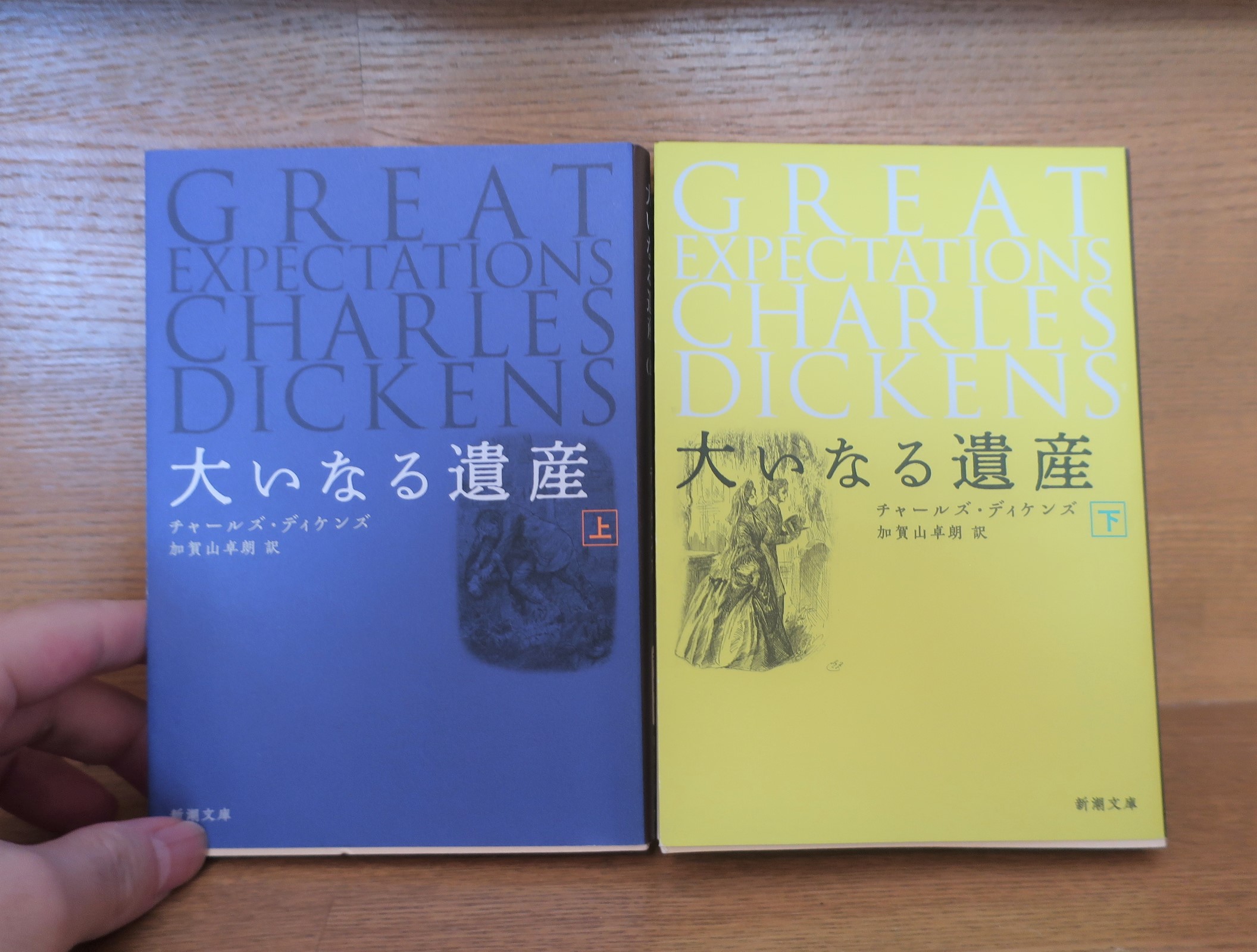

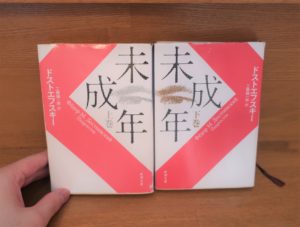
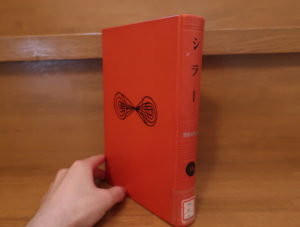
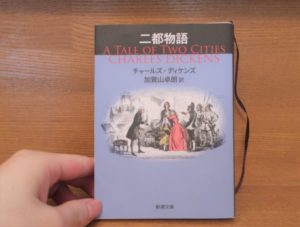
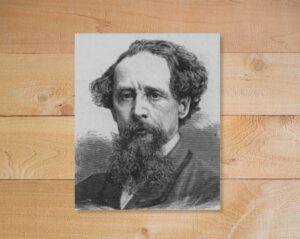
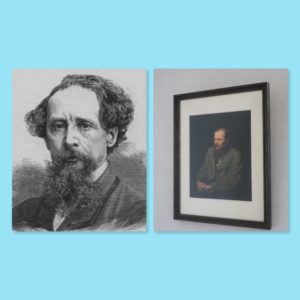
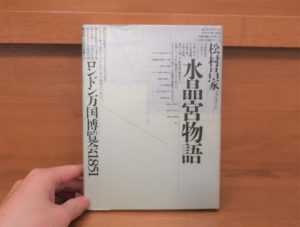
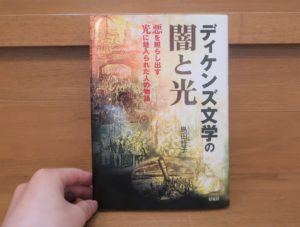
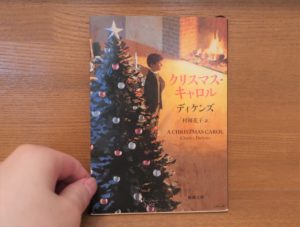
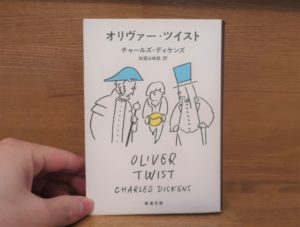
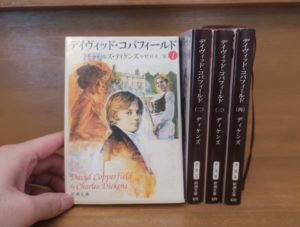
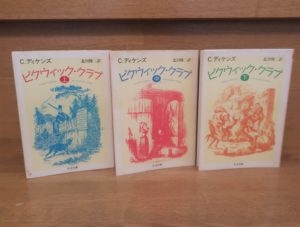
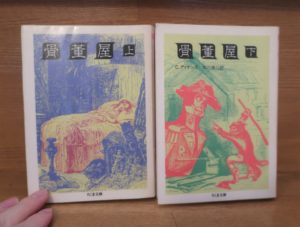

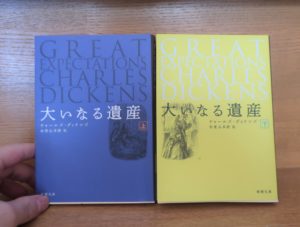
コメント